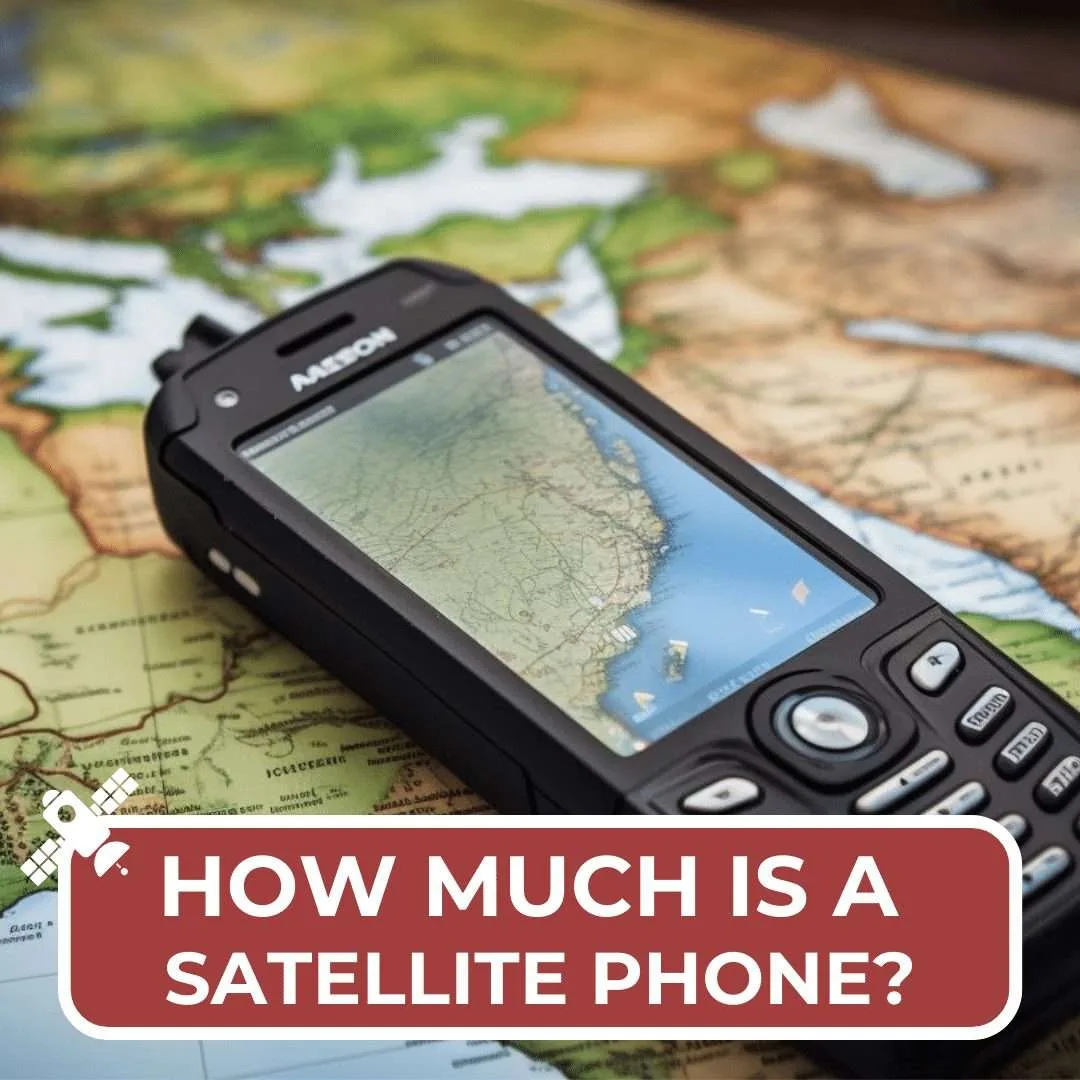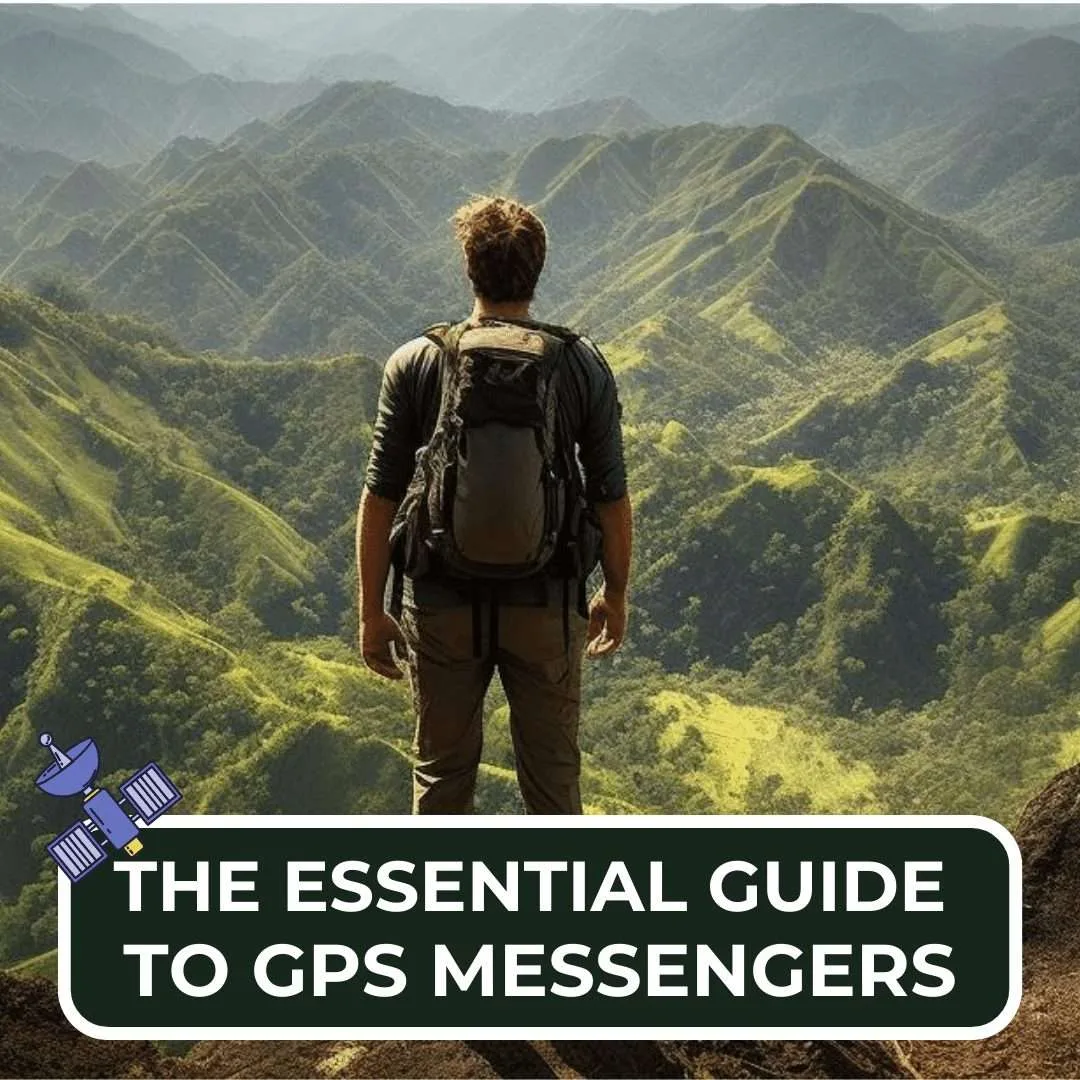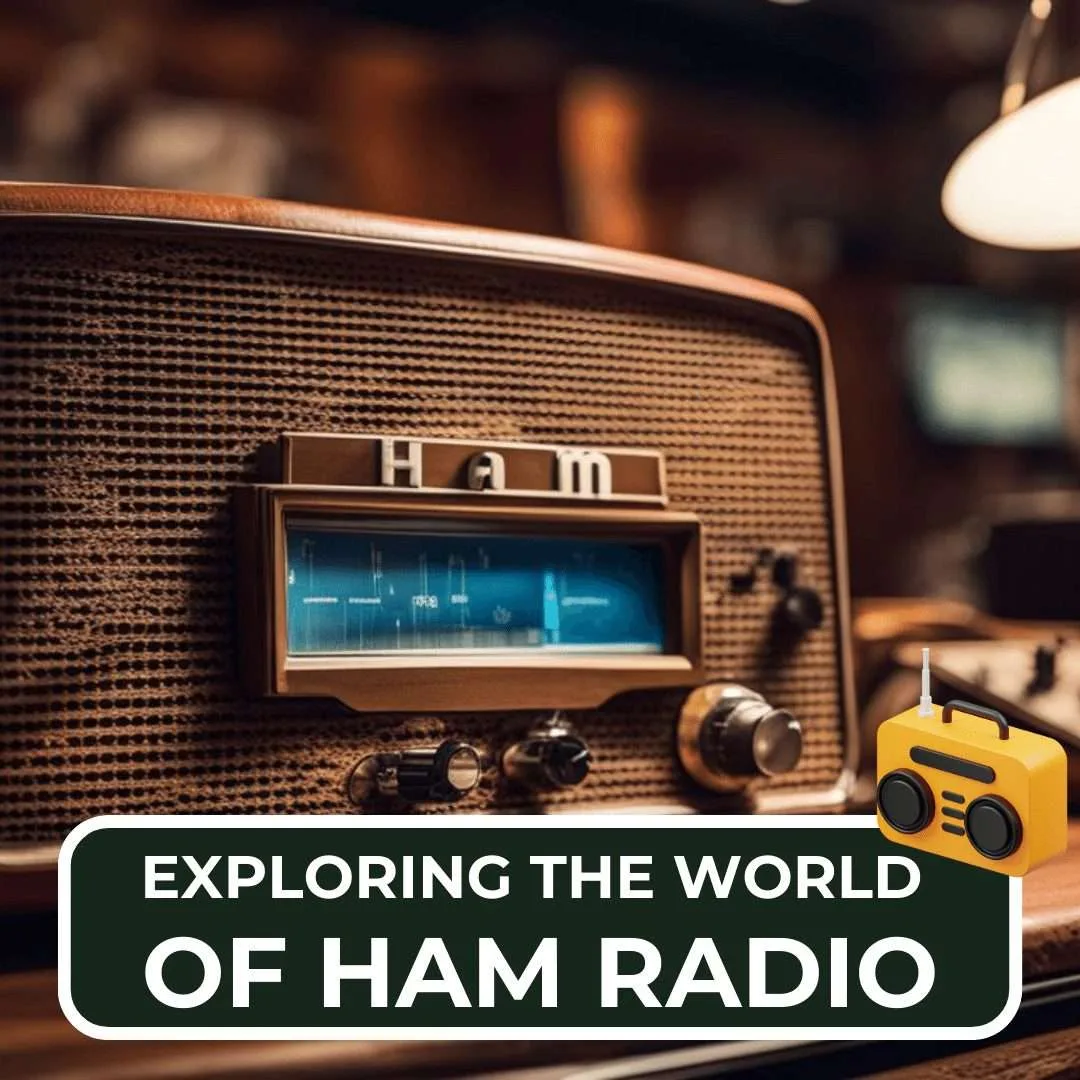Living or traveling off the grid can make staying connected a challenge, with traditional communication methods often falling short in remote locations. A fact unknown to many is that there are numerous solutions for maintaining contact even when far away from cell towers and WiFi signals.
This page will delve into various high-tech and low-tech devices built specifically for communicating effectively off-grid, discussing their features, pros, cons and how they operate.

Table of Contents
ToggleTHE IMPORTANCE OF OFF-GRID COMMUNICATION
Off-grid communication holds a pivotal role in today’s interconnected society. It becomes especially crucial if you live off-grid in remote areas lacking access to traditional networks or during emergencies when cell towers and landline connections falter.
Engaging with the world, staying informed, and reaching help become possible with off-grid communication tools.
Satellite phones and GPS trackers lead the high-tech options of this alternate means of communication. They provide reliable coverage across vast distances, even the most far-flung corners of the earth.
Lower-tech solutions like two-way radios are no less significant though they offer simple connectivity without financial strains that higher-end gadgets might impose.
Mesh networks present another attractive option; these decentralized systems link devices directly without requiring established infrastructure or any centralized hub. This architecture provides resilience against system failures since data simply finds a new route if one node fails.
Finally, let’s not overlook Ham Radios and walkie-talkies as popular choices for local-area off-grid communication offering different levels of range based on their power output and antenna design.
These tried-and-true methods continue serving many communities around the globe with ways to get internet efficiently while maintaining simplicity.
TYPES OF OFF-GRID COMMUNICATION DEVICES

Off-grid communication devices include satellite phones, GPS messengers, ham radios, mesh networks, and walkie-talkies.
SATELLITE PHONES
Satellite phones play a pivotal role in off-grid communication. These devices bypass the typical land-based telecommunication networks, using satellites instead to transmit signals and get satellite internet service. .
This makes them perfect for use in remote areas or during times when traditional methods fail due to natural disasters or emergencies.
Here’s a list of features that are often sought after in satellite phones by those living off the grid:
| Feature | Description |
|---|---|
| Global Coverage | Phones with worldwide connectivity for remote communication. |
| Durability | Rugged, weatherproof handsets able to withstand harsh conditions. |
| Long Battery Life | Devices with batteries that last longer for talk time and standby. |
| GPS Functionality | Equipped with GPS for navigation and safety in remote areas. |
| Emergency SOS Features | SOS button to send emergency signals or coordinates. |
| Data Capabilities | Able to handle data for emails, updates, and low-bandwidth internet. |
| Solar Charging Compatibility | Can be charged via solar power, crucial for off-grid areas. |
| Push-to-Talk (PTT) Service | Instant communication feature, like a walkie-talkie, for quick coordination. |
| External Antenna Port | Allows for external antenna connection to boost signal strength. |
| Voice and Data Encryption | Provides enhanced security for private communications. |
| Multi-Satellite Network Capability | Connects to multiple satellite networks for better reliability. |
| Easy-to-Use Interface | User-friendly for all age groups in emergency situations. |
-
Looking for the perfect off-grid satellite phone – Be sure to read about our top recommendations.
GPS MESSENGERS
GPS messengers, a marvel of modern technology, offer an advanced method for reliable off-grid communication. The beauty of these devices is their ability to transmit your location and messages via satellite networks.
Unlike cell phones and landlines that need traditional infrastructure, GPS messengers function in remote areas where those methods are unavailable or unreliable. This makes them ideal for communicating while hiking deep forests or sailing open waters.
They are not simply about sending casual chats though – they serve a vital role during emergencies too. With GPS messenger beacons, you can send out alerts containing your exact location as well as some predetermined messages to friends and family when faced with life-threatening scenarios.
In essence, having a GPS messenger on hand significantly increases the odds of survival if one gets lost or injured in uncharted territories.
When deciding what GPS Messenger to purchase, consider the following features:
| Feature | Description |
|---|---|
| Two-Way Messaging | Send and receive text messages via satellite. |
| SOS/Emergency Alert | Dedicated emergency feature to alert rescue authorities with location details. |
| Location Tracking and Sharing | Option for continuous tracking to share journey progress with contacts. |
| Check-In/OK Button | Quick check-in to send a predefined message indicating safety. |
| Global Satellite Network | Reliable global coverage for consistent remote area communication. |
| Long Battery Life | Suitable for prolonged trips without regular power sources. |
| Waterproof and Rugged Design | Can withstand harsh weather and rough handling. |
| Navigation and Waypoint Marking | Features to help find waypoints and return to start points. |
| Smartphone Integration | Works with smartphones for better mapping and messaging capabilities. |
| User-Friendly Interface | Intuitive use in stressful or challenging situations. |
| Compact and Portable | Small, lightweight design for easy transport. |
| Solar Charging Option | Can be charged via solar panels, key for off-grid areas. |
| Customizable Messaging | Create and send custom messages to any cell number or email. |
| Topographic Maps Access | Detailed maps for improved navigation and trip planning. |
| Multilingual Support | Multiple language support for user-friendliness across diverse users. |
-
Looking for the perfect off-grid GPS Messenger – Be sure to read about our top recommendations.
HAM RADIOS
Ham radios, a popular choice for off grid communication, transmit and receive radio signals allowing interaction over long distances. This device delivers remarkable range and reliability compared to other communication methods available. A Ham Radio can often be found in an off-grid cabin.
A license is necessary to operate ham radios at certain frequencies, but it’s worth the extra step considering its capabilities. Notably, in areas without traditional means of staying connected or during emergencies, ham radios serve as lifelines by maintaining crucial contact when needed most.
When reviewing a Ham Radio, consider the following features:
| Feature | Description |
|---|---|
| Multiple Frequency Bands | Capable of operating on various bands (HF, VHF, UHF) to ensure wide-range communication capabilities. |
| High Power Output | Radios with higher wattage can transmit over greater distances, crucial in remote areas. |
| Portable and Mobile Units | Compact and lightweight designs for handheld use, as well as mobile units for vehicle mounting. |
| Solar/Battery Powered | Options for solar charging or long-lasting battery packs for use where there is no electricity. |
| Digital and Analog Modes | Support for both digital and analog signals to utilize a wide array of frequencies and modes. |
| Built-in Antenna Tuner | Integrated antenna tuner to optimize transmission and reception without external equipment. |
| Weather-Resistant Construction | Durable build that can withstand adverse weather conditions, essential for off-grid environments. |
| Emergency Services Access | Access to emergency frequencies and the ability to send out distress signals. |
| Data Modes Capability | Support for digital communication modes like RTTY, PSK31, and FT8 for sending data over radio waves. |
| GPS Integration | Built-in GPS for navigation and for sending precise location information during communications. |
| Repeater Capabilities | Ability to use repeaters to extend the range of communication, especially in hilly or mountainous terrain. |
| Interference Filters | Advanced filtering to minimize interference and noise for clear communication. |
| Memory Channels | Ample memory channels to save frequently used frequencies for quick access. |
| Dual Watch and Tri-watch Functions | Monitoring two or three frequencies simultaneously to stay alert to multiple channels. |
| SWR Meter Integration | SWR meter to measure antenna efficiency and adjust for optimal performance. |
| APRS Support | Automatic Position Reporting System (APRS) for sharing location, text messages, and other data with other users on the same radio frequency. |
-
Looking for the perfect off-grid Ham radio – Be sure to read about our top recommendations.
MESH NETWORKS
Mesh networks are a high-tech option for off-grid communication. They use a decentralized approach, allowing devices to connect directly with one another. This creates a network that can cover a large area, making it especially useful in remote or rural locations where traditional communication methods may not be available.
Mesh networks enable devices to communicate with each other, bypassing the need for a internet provider or cellular networks. This means that even in areas with limited or no access to these networks, you can still establish reliable communication using mesh networks.
Consider the following features if wanting to setup an off-grid mesh network:
| Feature | Description |
|---|---|
| Self-Healing | Networks automatically recover from node failures |
| Scalability | Easy addition of nodes to expand coverage |
| Low Power Consumption | Efficient energy use for long-term operation |
| Long-Range | Nodes communicate over long distances |
| Peer-to-Peer | Direct device communication enhances speed |
| Decentralized | No single point of failure for robustness |
| Multi-Hop Routing | Messages hop between nodes to reach destination |
| Encryption | Secure communication with end-to-end encryption |
| Offline Functionality | Operates without an internet connection |
| Mobile Integration | Compatibility with smartphones and tablets |
| Adaptive Routing | Dynamic route adjustment based on node availability |
| Weatherproof Nodes | Nodes withstand harsh weather conditions |
| User-Friendly | Simple setup and maintenance |
| Cross-Compatibility | Works with various devices and operating systems |
| IoT Support | Connects Internet of Things devices |
| Bandwidth Optimization | Efficient bandwidth use to prevent congestion |
WALKIE-TALKIES
Walkie-talkies are a simple and affordable option for staying connected off the grid. They have a high range, allowing clear communication over long distances. With rechargeable battery packs or AAA batteries, walkie-talkies can provide reliable power in remote areas.
These devices offer multiple channel options and the ability to block out other conversations, ensuring private communication. Plus, they are built to withstand tough conditions, making them durable enough for adventures in any weather.
Stay connected with ease by using walkie-talkies as your off-grid communication tool of choice.
| Features | Description |
|---|---|
| Extended Range | Capable of long-distance communication essential in remote areas. |
| Multiple Channels | Variety of channels to avoid interference and for private conversations. |
| Privacy Codes | Sub-channels or codes to keep conversations secure. |
| Weatherproofing | Resistant to water, dust, and shock for durability. |
| Solar Charging | Ability to charge via solar panels for remote locations without power. |
| Long Battery Life | Batteries that last for an extended period, with rechargeable options. |
| NOAA Weather Alerts | Access to weather channels and alerts for real-time environmental updates. |
| VOX | Hands-free operation by speaking without pressing any buttons. |
| Built-in Flashlight | Integrated light source for low-light conditions. |
| Emergency Features | SOS signals, alarms, or features to alert in case of danger. |
| Cloning Capability | Easy setup of multiple units by copying settings from one device to another. |
| Dual Watch | Monitoring two channels simultaneously. |
| Backlit Display | Visibility in the dark, ensuring usability at any time. |
| Headset Compatibility | Connection of headsets for private and hands-free communication. |
| Rugged Design | Built to withstand drops and rough handling in outdoor use. |
| Frequency Scanning | Scanning capability to find active channels or monitor a range of frequencies. |
OVERALL FEATURES TO CONSIDER WHEN CHOOSING COMMUNICATION DEVICES
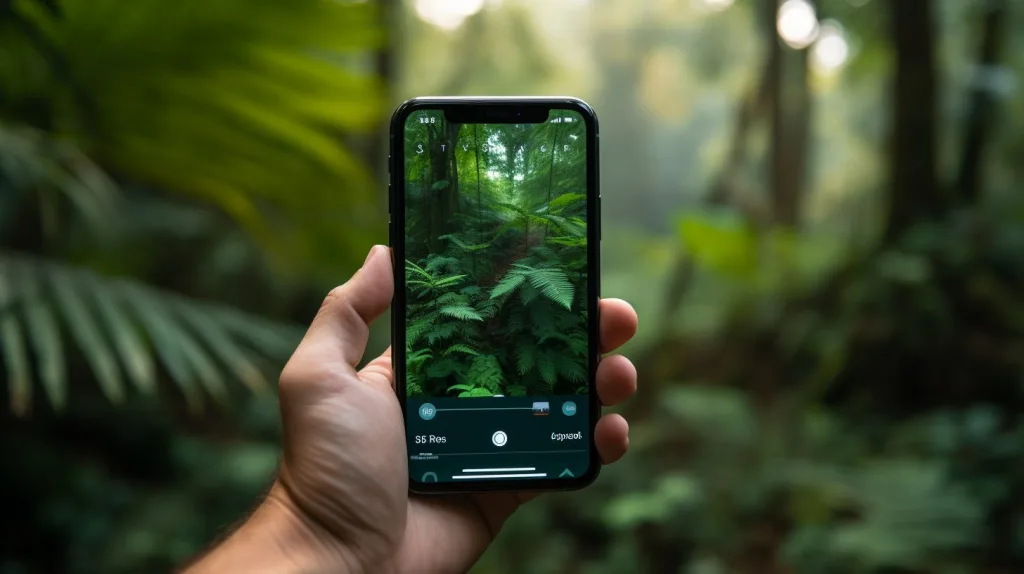
When choosing communication devices for off-grid use, it is important to consider features such as range and coverage, GPS and tracking capabilities, emergency features, power and reliability, as well as ease of use.
Range and Coverage
Satellite phones, GPS messengers, and other off-grid communication devices vary in their range and coverage capabilities. Satellite phones are known for their extensive coverage, allowing users to communicate from virtually anywhere on the planet.
They rely on satellite networks to transmit signals, making them ideal for remote areas with no traditional communication infrastructure. GPS messengers also use satellites to relay messages and provide location tracking, but their range can be limited compared to satellite phones.
On the other hand, ham radios and walkie-talkies operate using radio waves and have a more localized range of communication. It’s important to consider your specific needs when choosing a device based on its range and coverage capabilities.
GPS and Tracking
GPS trackers are essential tools for off-gridders who want to stay connected in remote areas. These high-tech devices use satellite networks to transmit your location and messages, ensuring that you can always communicate with others and provide important updates on your whereabouts.
Whether you’re exploring the wilderness or embarking on an adventure, GPS tracking technology offers peace of mind and enhances safety by allowing others to monitor your movements.
With reliable GPS trackers, off-gridders can navigate confidently and stay connected even in the most remote corners of the world.
Emergency Features
Emergency features are essential when choosing communication devices for off-grid exploration. These features ensure that you can stay connected and communicate in emergency situations, even when traditional means of communication may not be available.
Some important emergency features to consider include GPS and tracking capabilities, which allow others to locate you if needed. Power and reliability are also crucial factors as you need devices that will work consistently in any situation.
Additionally, ease of use is important during emergencies when time is critical. By selecting communication devices with these emergency features, you can have peace of mind knowing that you are prepared for any unexpected circumstances while off the grid.
Power and Reliability
Satellite phones, ham radios, GPS messengers, and Walkie talkies are all reliable options for off-grid communication. These devices provide stable connections and are not dependent on traditional cell phone services.
This means that even in remote locations or during power outages, you can still stay connected. Power and reliability are crucial features to consider when choosing your off-grid communication devices to ensure that you can always communicate effectively, no matter the circumstances.
Ease of Use
Off-gridders need communication devices that are easy to use, ensuring efficient and effective communication in remote areas. When selecting off-grid communication devices, it is crucial to consider their ease of use.
Whether it’s a satellite phone or a GPS messenger, the ability to navigate through menus and access features quickly can make all the difference in critical situations. Additionally, user-friendly interfaces and intuitive controls allow for quick learning and seamless operation.
With simple setup procedures and hassle-free functionality, these devices enable off-gridders to stay connected without any technical obstacles. Ease of use ensures that even those with limited technical knowledge can utilize these devices effectively for essential communication needs in off-grid environments.
OFF-GRID INTERNET OPTIONS
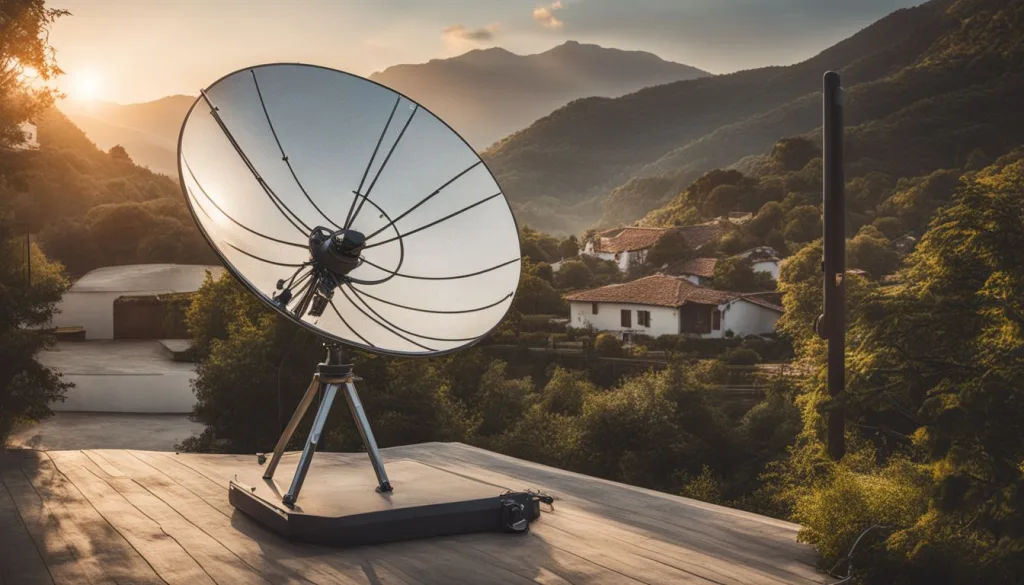
There are several options available for off-grid internet connection, the following 4 ways to get online include cell signal boosters and antennas, satellite internet, and LoRa mesh networks.
CELL SIGNAL BOOSTERS AND ANTENNAS
Cell signal boosters and antennas play a crucial role in improving off-grid communication. These devices amplify existing 3G, 4G, or 5G connections, making it easier to stay connected even in remote areas with little to no cell signal available.
By boosting the strength of your cellular connection, cell signal boosters and antennas ensure that you can make voice calls and access data services more reliably. They are versatile tools that can support various types of cellular technology, making them an effective solution for enhancing off-grid communication options.
Whether you’re camping in the wilderness or living in a remote location, cell signal boosters and antennas can significantly improve your connectivity and keep you connected with the outside world.
| Features | Description |
|---|---|
| Wide Coverage Area | Boosters that can amplify signals over large areas, essential for expansive off-grid locations. |
| Multi-Carrier Support | Compatibility with multiple cellular carriers to ensure broad service coverage. |
| High Gain Antenna | Antennas with high gain to increase signal strength from distant cell towers. |
| Omni-Directional Antennas | Antennas that receive signals from all directions, eliminating the need for directional alignment. |
| Directional Antennas | Antennas focused on a specific direction for a stronger signal from distant towers. |
| Weather-Resistant Construction | Durable build to withstand adverse weather, critical for outdoor installations. |
| Building Material Penetration | Ability to penetrate dense building materials for signal strength inside structures. |
| Automatic Gain Control | Self-adjusting feature to optimize signal strength without manual intervention. |
| Easy Installation | Systems designed for user-friendly setup without professional help. |
| Low Noise Amplifier | Amplifiers that minimize signal noise for clearer communication. |
| Remote Monitoring Capabilities | Ability to monitor and adjust the booster’s performance remotely. |
| 4G LTE and 5G Compatibility | Support for current and future cellular technologies to ensure longevity of use. |
| Battery Backup | Inclusion of a battery backup to maintain signal during power outages. |
| FCC Certification | Compliance with Federal Communications Commission regulations for legal use. |
| Integrated Indoor Antenna | Boosters with built-in antennas for a more compact and discreet setup. |
| External Antenna Expandability | Options to connect additional antennas for increased flexibility and range. |
SATELLITE INTERNET
Satellite Internet is a reliable option for communication in off-grid areas. With this technology, you can access the internet even in remote locations where traditional methods are unavailable.
Satellite phones draw their signal from satellites orbiting the Earth, providing a stronger and more stable connection compared to cell phone towers. This means that your communication won’t be affected by terrains or distance limitations.
Plus, satellite Internet allows for two-way text messaging, GPS tracking capabilities and wi-fi, making it a versatile choice for staying connected while off the grid.
| Features | Description |
|---|---|
| Global Coverage | Ability to provide internet access in remote and rural locations worldwide. |
| High-Speed Connectivity | Offers fast internet speeds suitable for streaming, browsing, and communication. |
| Low Latency | Reduced delay in data transmission, improving real-time communication. |
| Weather Resilience | Reliable performance despite weather conditions that may affect signal. |
| Portable Systems | Equipment that can be easily relocated and set up as needed. |
| Data Allowance | Sufficient monthly data limits or unlimited data options. |
| Throttling Policies | Clear policies on speed reduction after reaching data limits, if applicable. |
| Equipment Lease Options | Availability of rental equipment to avoid upfront purchase costs. |
| Easy Installation | User-friendly setup processes that don’t require professional installation. |
| Scalable Plans | Variety of service plans to suit different usage needs and budgets. |
| Network Security | Advanced security features to protect data transmission. |
| Outage Support | Responsive support for service interruptions and technical issues. |
| Dual-Band Frequencies | Use of multiple frequencies for better reliability and speed. |
| Built-In Wi-Fi | Satellite modems with integrated Wi-Fi to eliminate the need for extra equipment. |
| VPN Compatibility | Support for Virtual Private Networks for secure, remote access. |
| Commitment Periods | Flexible contract terms, including month-to-month options. |
LORA MESH NETWORKS
LoRa Mesh Networks are a decentralized approach to communication that is ideal for people who live off grid. These networks use long-range technology and the UHF radio wave spectrum, allowing them to operate independently of cellular companies and towers.
With LoRa mesh devices, off-gridders can transmit encrypted text messages and GPS location data over several miles, making it a reliable option in remote areas. As part of the Internet of Things (IoT), these devices provide a far-reaching communication solution that ensures you stay connected even when living off the grid.
| Features | Description |
|---|---|
| Long Transmission Range | Capable of sending and receiving signals over several kilometers, even in challenging terrains. |
| Low Power Operation | Designed for minimal energy consumption to prolong battery life in remote locations. |
| High Network Capacity | Ability to support a large number of nodes within a single network. |
| Adaptive Data Rate | Adjusts the transmission rate based on the distance between nodes to optimize battery life. |
| End-to-End Encryption | Provides secure data transmission to protect sensitive information. |
| Interference Resistance | Robust against interference from other wireless signals in the area. |
| Scalability | Networks can be easily expanded by adding more nodes as needed. |
| Geo-Location Without GPS | Ability to triangulate positions without the need for GPS hardware. |
| Integration with IoT Devices | Compatible with a wide range of Internet of Things devices for smart applications. |
| Bi-Directional Communication | Supports two-way communication for data sending and receiving capabilities. |
| Over-The-Air Updates | Allows for remote updating of firmware and software on the devices. |
| Environmental Resistance | Equipment is built to withstand harsh weather conditions and temperatures. |
| Autonomous Operation | Nodes can operate independently, making decisions and performing actions without a central server. |
| Real-Time Data Handling | Capable of processing and transmitting data as it is collected. |
| Multi-Hop Networking | Data can hop between nodes to reach its destination, enhancing network range and reliability. |
| Community Support | Strong community and developer support for troubleshooting and enhancements. |
CONCLUSION
In conclusion, off-grid communication is crucial for those who live or travel in remote areas. With the rise of advanced devices like satellite phones and GPS messengers, it’s easier than ever to stay connected when outside the range of traditional networks.
Whether using high-tech options like mesh networks or low-tech options like walkie-talkies, having reliable means of communication ensures both safety and peace of mind off the grid.
So no matter where your adventures take you, staying in touch with loved ones and emergency services is just a call away.
FAQ’S:
WHAT IS THE BEST OFF-GRID INTERNET SOLUTION?
The best off-grid internet solution depends on your specific needs and location. Some popular options include satellite internet, wireless internet services, and using signal boosters to enhance existing cellular signals.
WHAT IS THE ROLE OF A CELL PHONE BOOSTER IN OFF-GRID INTERNET ACCESS?
A cell phone booster helps enhance the cell service and signal strength in areas with weak or no cellular network coverage. It can improve your chances of getting internet access off the grid by boosting the signal strength of your mobile phone.
ARE THERE UNLIMITED DATA PLANS AVAILABLE FOR OFF-GRID INTERNET?
Yes, some satellite internet providers offer unlimited data plans for off-grid internet access, allowing you to use the internet without worrying about data caps.
CAN I USE MY SMARTPHONE TO GET INTERNET OFF THE GRID?
Yes, you can use your smartphone to get internet off the grid by utilizing its built-in hotspot feature or connecting it to a wireless internet device.
WHAT IS WIRELESS INTERNET AND HOW DOES IT WORK OFF THE GRID?
Wireless internet uses radio waves to transmit data signals and can be used off the grid by setting up a wireless network using a wireless router and compatible devices.
CAN I USE SATELLITE INTERNET SERVICE TO LIVE OFF THE GRID?
Yes, satellite internet service is an excellent option for those who want to live off the grid but still need access to the internet. It allows you to stay connected and have reliable internet communication, even in remote areas.
HOW CAN I BOOST MY CELL PHONE SIGNAL FOR OFF-GRID COMMUNICATION?
You can boost your cell phone signal for off-grid communication by using a signal booster or a cellular signal amplifier. These devices amplify weak signals and improve reception, allowing you to make calls and access data more reliably.

